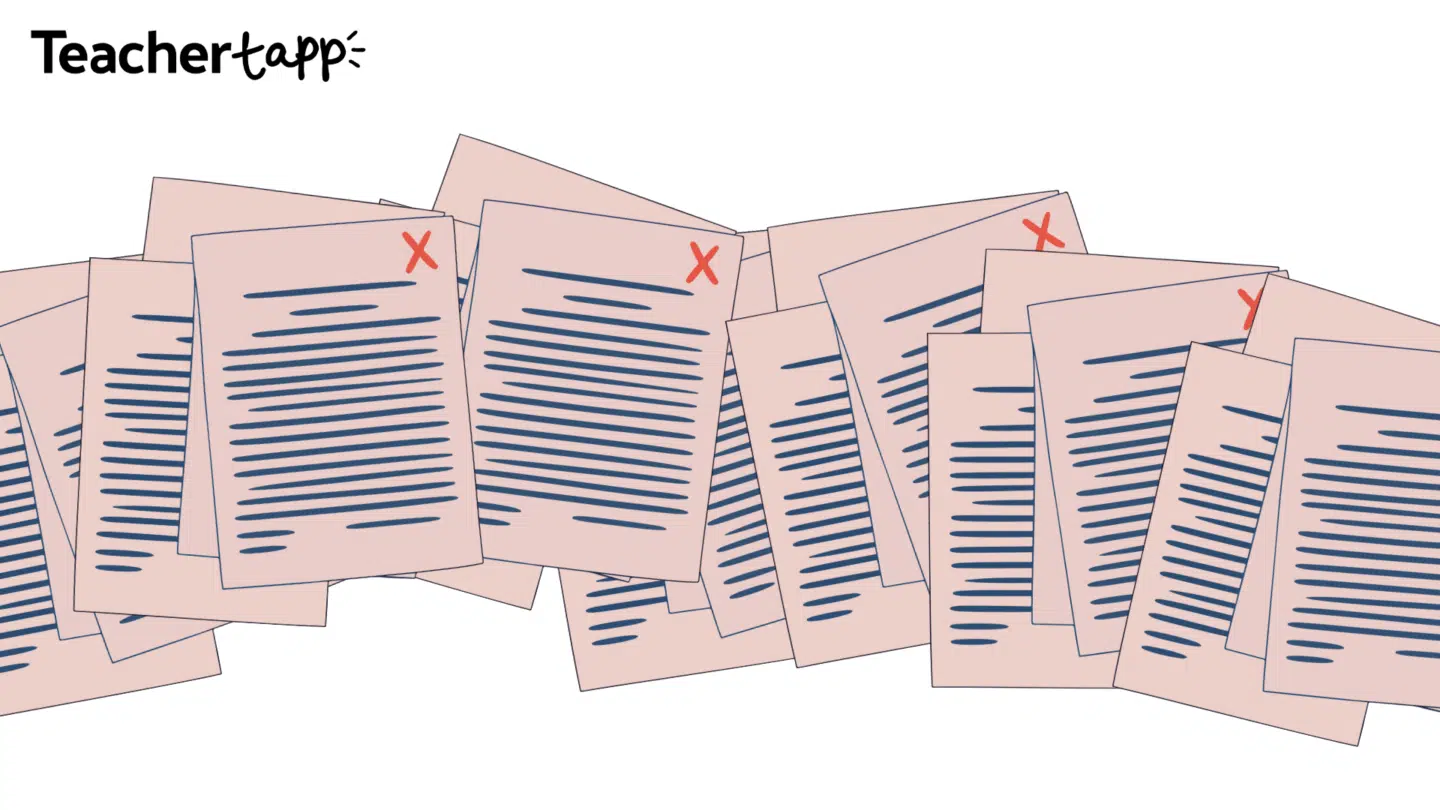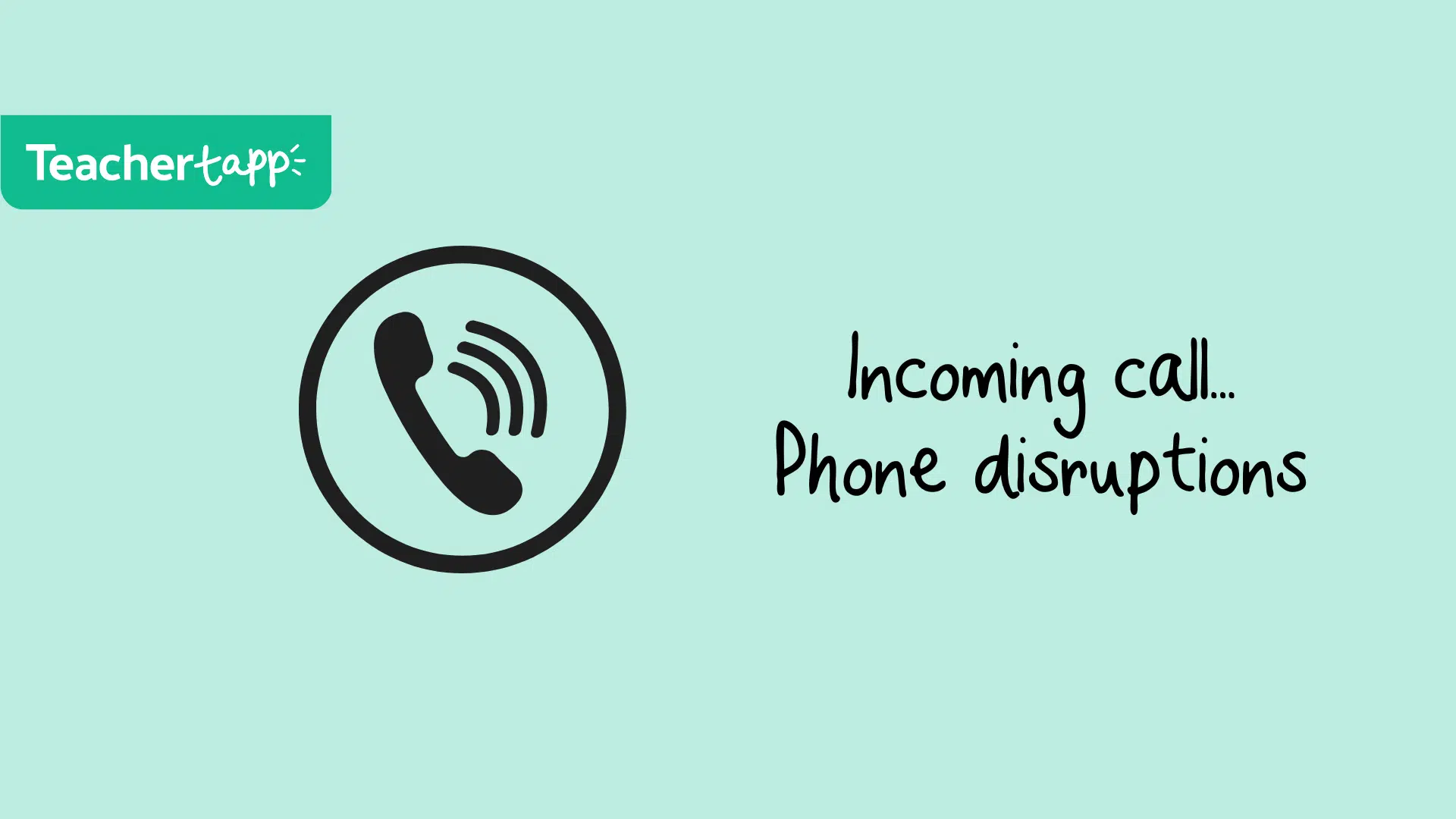
Hey there, Tappsters!
Top Tapper Referrers
It’s the last few days of our Teacher Tapper Referral incentive – with already more than 100 new Tappers joining the Teacher Tapp community 🙌.
For every teacher who signs up from a referral and answers two days of questions, we donate £5 to Education Support. So far, you’ve raised £570 to support teacher wellbeing! 🎉
Each Tapper can unlock up to £25 in donations, with a total pot of £5,000 available — but only until 30th September (or until the donations run out).
There is still time to take part – find your code in the app, spread the word, and let’s see how much we can raise for this important teacher charity 💪.
1. Put your phone away!
“Phones away!” It’s a common refrain in school corridors and playgrounds – but does the school mobile phone policy mean that some teachers are spotting phone infringements more than others?
More than a quarter (26%) of teachers in secondary schools where phones are collected in or put in pouches still said those dreaded words in the last week – but teachers in schools where phones are meant to be off-site altogether also spotted students on their mobiles (40%).
This figure shoots up when looking at schools with less strict rules: 60% of teachers in schools where phones should be out of sight all day saw a phone being used when it shouldn’t have been.
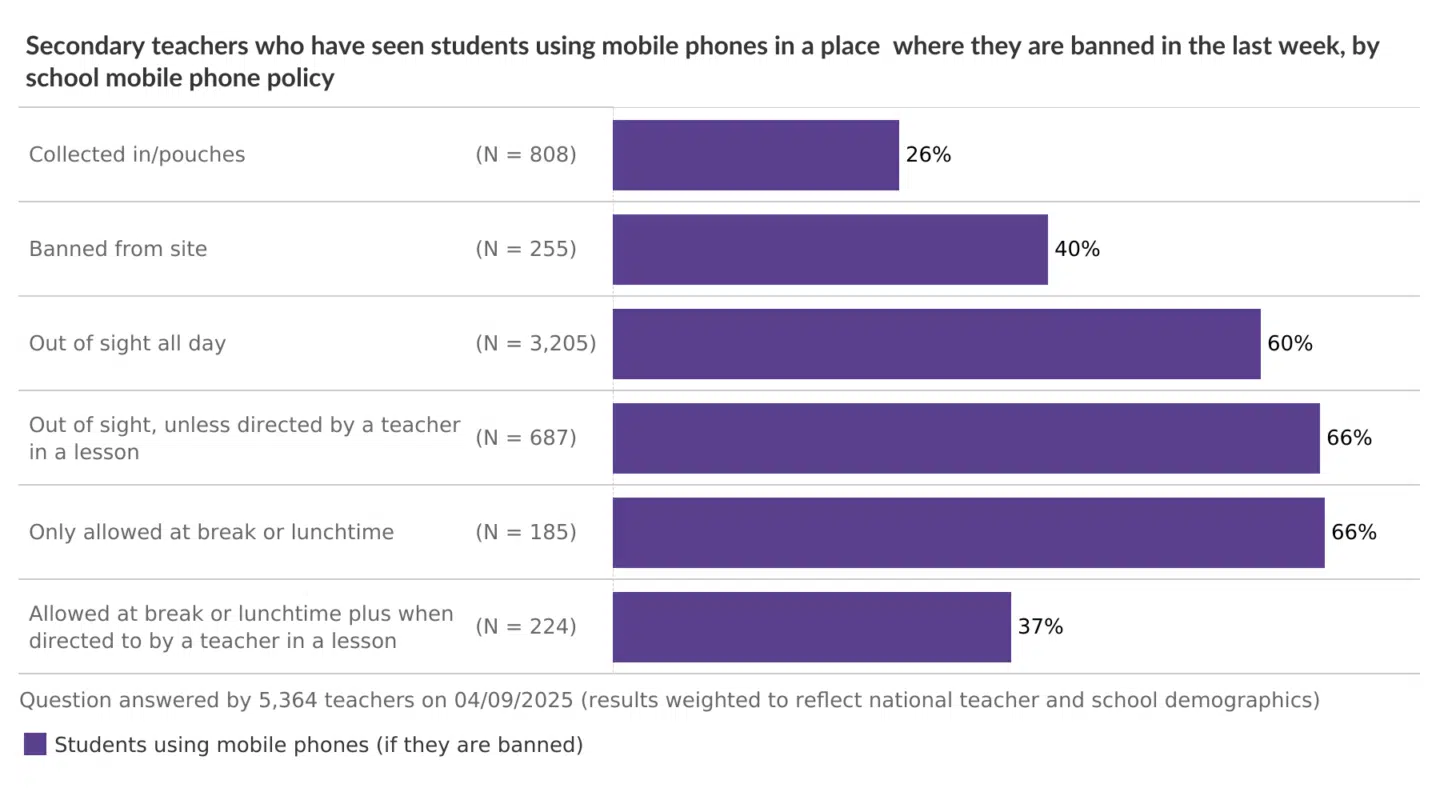
As we reported earlier this month, schools have been tightening rules for mobile phones:
- In 2018, just 3% of secondary teachers reported their school collected phones or used pouches.
- Today, that’s jumped six-fold to 18%.
- The number of schools telling pupils their phones must be out of sight all day has also risen — from 39% in 2018 to 56%
And it’s not just mobile phones causing issues – shoving and pushing (71% primary and 75% secondary), as well as dropping litter (17% primary and 40% secondary), have been problems for teachers.
Student fighting is more of a problem for primary than secondary (29% vs 18%), but on the upside, primary teachers are more likely than their secondary colleagues to say “none of the above” (24% vs 12%).
So if you’re feeling a little frazzled by student behaviour – do not feel like you’re alone!
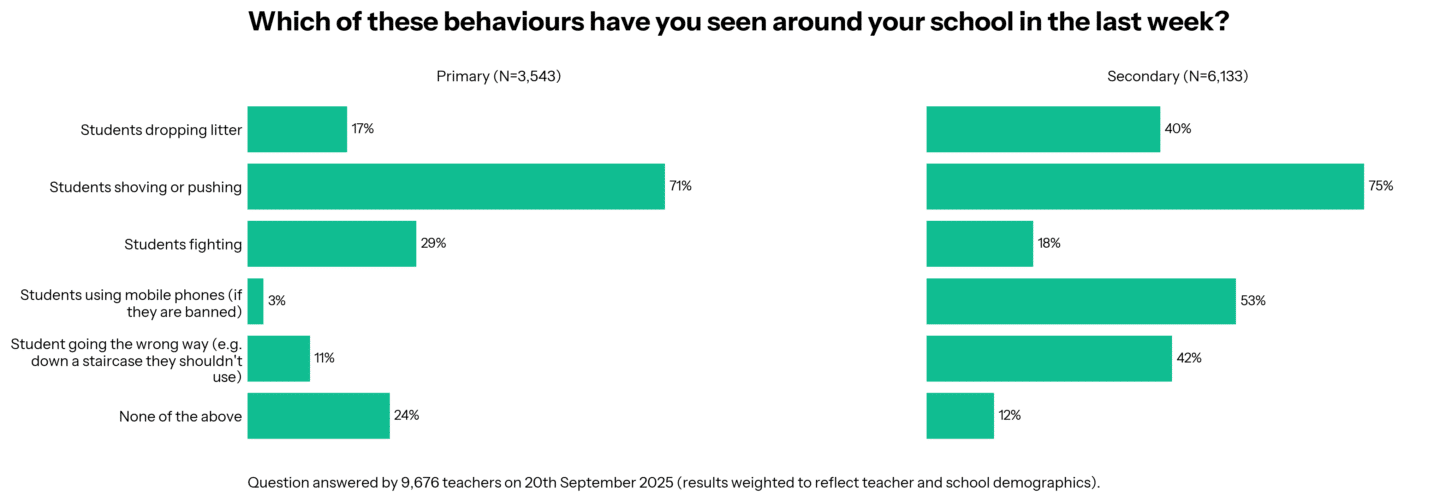
Detentions
Now, from behaviour to sanction – what did we learn about detentions in secondary schools last week…
More detentions were issued during lessons compared to outside of lessons last week.
22% of teachers handed out detentions on Friday last week – but the subject most likely to be handing out detentions was humanities (26%), and art teachers were the least likely (17%).
Just 10% of teachers handed out detentions outside of lessons. However, unlike detentions in lessons, the subject you teach doesn’t make a difference in whether you hand out a detention outside of lesson time.
We didn’t ask the year group of the students you gave the detentions to…but if we were forced to guess, it would be year nine…after all, it was the top answer when we asked which year group you found the most difficult to manage!
2. Displays
Now, from the behaviour of the students IN the classroom, to what is going on with the WALLS of your classroom!
In primary classrooms, the displays on the wall are a humongous task – and not just one for the Autumn term. Though the new year might explain why 45% laminated something for work this week…
Who puts up the displays? Usually, it’s the teacher who mainly teaches in there (87%), and then support staff (37%) and other classroom teachers (21%).
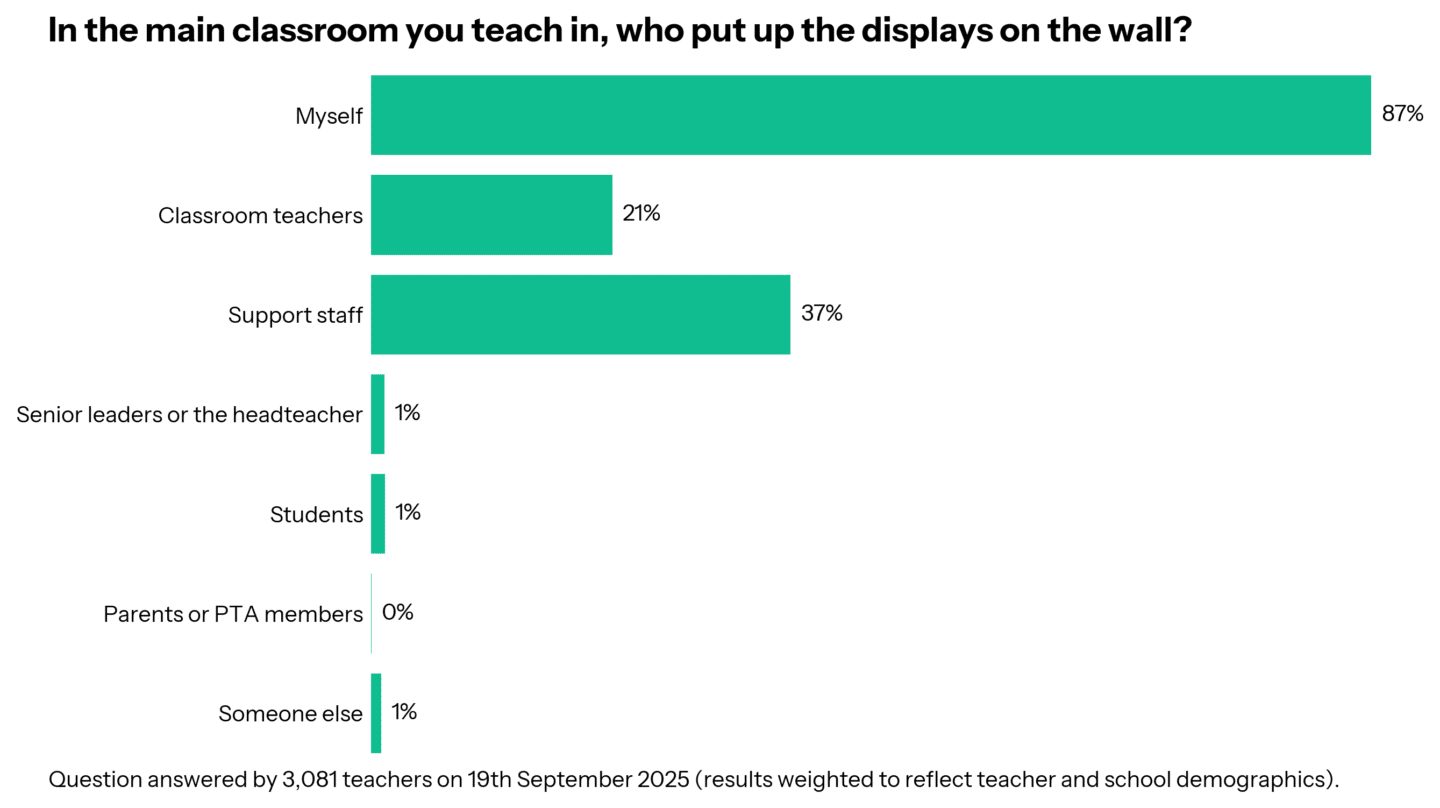
Perhaps one of the items up on display is a visual timetable – 84% use these aids with their whole class, and 8% use them with certain students.
Does it matter who is putting up the display? In the 2024 ‘Workload Reduction Recommendations’ document published by the Department for Education, it says teachers should not be asked to do tasks involving:
“Organisation, decoration and assembly of the physical classroom space e.g. moving classrooms, moving classroom furniture, putting up and taking down classroom displays.“
So if teachers are clearly still putting up displays, is this their choice? Or because there is no one else to do it?
3. Long days
Meetings, marking, and lesson preparation: all things that need to be squeezed in around the actual teaching. It’s not unusual to see the school car park begin to fill up long before the school bus arrives (which makes it all the more annoying when TV teachers arrive alongside the students…).
Slightly more primary teachers arrive between 1-2 hours before school opens to students, when compared to secondary teachers (45% vs 34%).
When it comes to leaving times, slightly more secondary teachers leave before 5 pm compared to primary teachers (51% vs 30%).
What keeps primary teachers in the building longer? Is marking and planning harder to carry home when working with younger children? Or perhaps primary teachers have more meetings or need to speak to colleagues?
If you have suggestions of more questions we should ask, get in touch! Email england@teachertapp.co.uk.
+ BONUS gardening clubs 🪴
There has been a slight increase in the number of schools offering gardening clubs (UP to 29% vs 21% in 2021).
However, the growth (😝 🌱) has come from an increase in secondary schools offering a chance for their students to get green-fingered (UP 8 percentage points, versus 2 percentage points in primary).
About a third of schools that offer a gardening club also have a school farm or an allotment.
London and the South East are more likely to offer gardening clubs than their northern neighbours (31% vs 26% in Yorkshire and the North East).
Daily Reads
10% of you read our blog on delivering quality inset this week – perhaps you are already thinking about the content of your next session!
Got a blog you think we should feature? Email us at england@teachertapp.co.uk and we will check it out!
